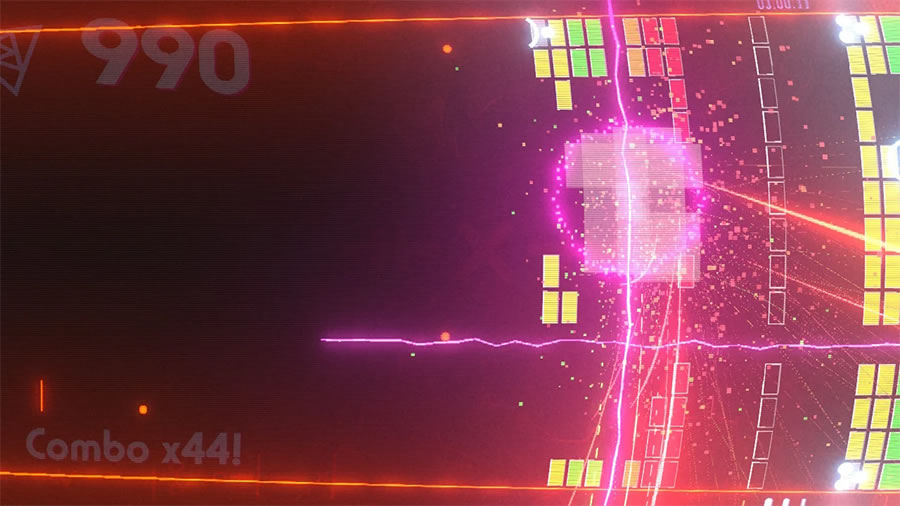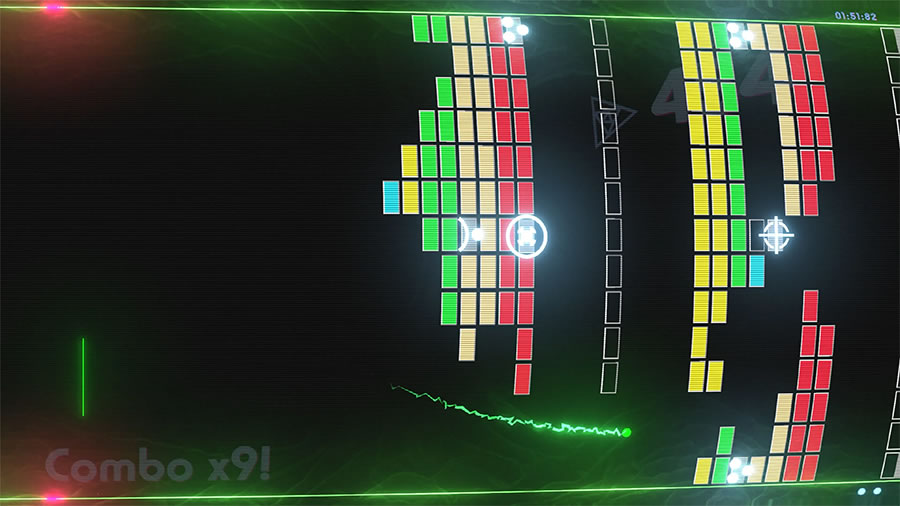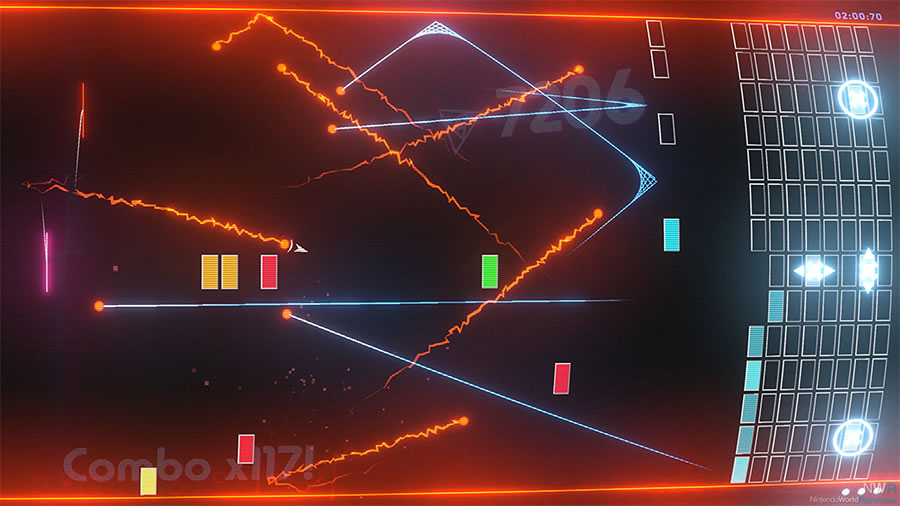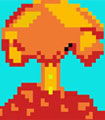- CLASSIC MAGAZINES
- REVIEW CREW
A show recapping what critics thought back
when classic games first came out! - NEXT GENERATION'S BEST & WORST
From the worst 1-star reviews to the best
5-stars can offer, this is Next Generation! - NINTENDO POWER (ARCHIVE)
Experience a variety of shows looking at the
often baffling history of Nintendo Power! - MAGAZINE RETROSPECTIVE
We're looking at the absolutely true history of
some of the most iconic game magazines ever! - SUPER PLAY'S TOP 600
The longest and most ambitious Super NES
countdown on the internet! - THEY SAID WHAT?
Debunking predictions and gossip found
in classic video game magazines! - NEXT GENERATION UNCOVERED
Cyril is back in this spin-off series, featuring the
cover critic review the art of Next Generation! - HARDCORE GAMER MAGAZING (PDF ISSUES)
Download all 36 issues of Hardcore Gamer
Magazine and relive the fun in PDF form!
- REVIEW CREW
- ELECTRONIC GAMING MONTHLY
- ELECTRONIC GAMING MONTHLY RANKS
From Mario to Sonic to Street Fighter, EGM
ranks classic game franchises and consoles! - ELECTRONIC GAMING MONTHLY BEST & WORST
Counting down EGM’s best and worst reviews
going year by year, from 1989 – 2009! - ELECTRONIC GAMING BEST & WORST AWARDS
11-part video series chronicling the ups and
downs of EGM’s Best & Worst Awards!
- ELECTRONIC GAMING MONTHLY RANKS
- GAME HISTORY
- GAME OVER: STORY BREAKDOWNS
Long-running series breaking down game
stories and analyzing their endings! - A BRIEF HISTORY OF GAMING w/ [NAME HERE]
Real history presented in a fun and pithy
format from a variety of game historians! - THE BLACK SHEEP
A series looking back at the black sheep
entries in popular game franchises! - INSTANT EXPERT
Everything you could possibly want to know
about a wide variety of gaming topics! - FREEZE FRAME
When something familiar happens in the games
industry, we're there to take a picture! - I'VE GOT YOUR NUMBER
Learn real video game history through a series
of number-themed episodes, starting at zero! - GREAT MOMENTS IN BAD ACTING
A joyous celebration of some of gaming's
absolute worst voice acting!
- GAME OVER: STORY BREAKDOWNS
- POPULAR SHOWS
- DG NEWS w/ LORNE RISELEY
Newsman Lorne Riseley hosts a regular
series looking at the hottest gaming news! - REVIEW REWIND
Cyril replays a game he reviewed 10+ years
ago to see if he got it right or wrong! - ON-RUNNING FEUDS
Defunct Games' longest-running show, with
editorials, observations and other fun oddities! - DEFUNCT GAMES QUIZ (ARCHIVE)
From online quizzes to game shows, we're
putting your video game knowledge to the test!- QUIZ: ONLINE PASS
Take a weekly quiz to see how well you know
the news and current gaming events! - QUIZ: KNOW THE GAME
One-on-one quiz show where contestants
find out if they actually know classic games! - QUIZ: THE LEADERBOARD
Can you guess the game based on the classic
review? Find out with The Leaderboard!
- QUIZ: ONLINE PASS
- DEFUNCT GAMES VS.
Cyril and the Defunct Games staff isn't afraid
to choose their favorite games and more! - CYRIL READS WORLDS OF POWER
Defunct Games recreates classic game
novelizations through the audio book format!
- DG NEWS w/ LORNE RISELEY
- COMEDY
- GAME EXPECTANCY
How long will your favorite hero live? We crunch
the numbers in this series about dying! - VIDEO GAME ADVICE
Famous game characters answer real personal
advice questions with a humorous slant! - FAKE GAMES: GUERILLA SCRAPBOOK
A long-running series about fake games and
the people who love them (covers included)! - WORST GAME EVER
A contest that attempts to create the worst
video game ever made, complete with covers! - LEVEL 1 STORIES
Literature based on the first stages of some
of your favorite classic video games! - THE COVER CRITIC
One of Defunct Games' earliest shows, Cover
Critic digs up some of the worst box art ever! - COMMERCIAL BREAK
Take a trip through some of the best and
worst video game advertisements of all time! - COMIC BOOK MODS
You've never seen comics like this before.
A curious mix of rewritten video game comics!
- GAME EXPECTANCY
- SERIES ARCHIVE
- NINTENDO SWITCH ONLINE ARCHIVE
A regularly-updated list of every Nintendo
Switch Online release, plus links to review! - PLAYSTATION PLUS CLASSIC ARCHIVE
A comprehensive list of every PlayStation
Plus classic release, including links! - RETRO-BIT PUBLISHING ARCHIVE
A regularly-updated list of every Retro-Bit
game released! - REVIEW MARATHONS w/ ADAM WALLACE
Join critic Adam Wallace as he takes us on a
classic review marathon with different themes!- DEFUNCT GAMES GOLF CLUB
Adam Wallace takes to the links to slice his way
through 72 classic golf game reviews! - 007 IN PIXELS
Adam Wallace takes on the world's greatest spy
as he reviews 15 weeks of James Bond games! - A SALUTE TO VAMPIRES
Adam Wallace is sinking his teeth into a series
covering Castlevania, BloodRayne and more! - CAPCOM'S CURSE
Adam Wallace is celebrating 13 days of Halloween
with a line-up of Capcom's scariest games! - THE FALL OF SUPERMAN
Adam Wallace is a man of steel for playing
some of the absolute worst Superman games! - THE 31 GAMES OF HALLOWEEN
Adam Wallace spends every day of October afraid
as he reviews some of the scariest games ever! - 12 WEEKS OF STAR TREK
Adam Wallace boldly goes where no critic has
gone before in this Star Trek marathon!
- DEFUNCT GAMES GOLF CLUB
- DAYS OF CHRISTMAS (ARCHIVE)
Annual holiday series with themed-episodes
that date all the way back to 2001!- 2015: 30 Ridiculous Retro Rumors
- 2014: 29 Magazines of Christmas
- 2013: 29 Questionable Power-Ups of Christmas
- 2012: 34 Theme Songs of Christmas
- 2011: 32 Game Endings of Christmas
- 2010: 31 Bonus Levels of Christmas
- 2009: 30 Genres of Christmas
- 2008: 29 Controls of Christmas
- 2007: 34 Cliches of Christmas
- 2006: 33 Consoles of Christmas
- 2005: 32 Articles of Christmas
- 2004: 31 Websites of Christmas
- 2003: 29 Issues of Christmas
- 2002: 28 Years of Christmas
- 2001: 33 Days of Christmas
- NINTENDO SWITCH ONLINE ARCHIVE
- REVIEW ARCHIVE
- FULL ARCHIVE
Breakout Beyond
As far as I’m concerned, Breakout should rank as one of Atari’s best games. It not only has a simple and addictive formula, but it also comes from the company’s A-team, including Nolan Bushnell, Steve Wozniak, Al Alcorn and even Steve Jobs. What they created was so good that Taito couldn’t wait to blatantly rip it off with the popular Arkanoid series, and even Nintendo got in on the action with Alleyway on the Game Boy. Now, almost fifty years after Atari laid down those colorful bricks, they want us to break them all over again in Breakout Beyond. By flipping it on its side and adding more complicated level designs, developer Choice Provisions has shaken up the formula in a lot of fun ways. Does that make it Atari’s best reboot yet? That’s what we’re about to find out when I review Breakout Beyond.
This is not the first time Atari has updated Breakout. This isn’t even the first time this decade, as Atari published Breakout: Recharged just three years ago. When I reviewed that game, I criticized the widescreen playfield, complaining that it changes the speed of the action and limits the kind of brick patterns that were possible. Somebody must have been listening, because the developers behind Breakout Beyond have taken what was great about the 1976 original and pushed it on its side. Literally.
The very first thing you’re going to notice about this new Breakout game is that the camera has been turned 90 degrees. Although a little jarring at first, the shift makes a lot of sense. From a practical perspective, it allows the game to use the widescreen display in much the same way the arcade cabinet used the much taller aspect ratio. This also gave the developers the freedom to move the screen, almost like we’re on a conveyer belt full of colorful bricks. This time around, the goal isn’t to clear the full screen of bricks, but rather to take our bouncing ball through a brick-laden obstacle course and quite literally break out of the level.
At its core, that’s what sets this update apart from the older games and many of its competitors. As much as it is about clearing a path to the exit, it’s also an opportunity for the developers to create a whole bunch of increasingly complicated brick patterns that don’t have to all fit on a single screen. As we scroll through the 72 stages, we see short patterns, long patterns and even a few with familiar faces. Some are dense with bricks, while others are more spread out, giving you room to breathe and set up big plays. This conveyer belt approach really helps to flesh out the level designs and make this game feel fresh, despite being an update to a 50-year-old game.
Much like the Recharged version from 2022, Breakout Beyond features a number of convenient power-ups, as well as a couple that feel like they are there to screw up your combo. One of the most effective power-ups will place a wall right behind your paddle, keeping the ball alive, even if you miss it a couple of times. There are also power-ups that will explode when you hit them or give the paddle the ability to shoot down other bricks, similar to Arkanoid. On the other hand, there’s the multiball, which will split the single ball into three (or more, if you hit multiple multi-ball icons). While this is great for taking out a bunch of bricks all at once, good luck paying attention to three or more balls at once.
One thing that I like is how the player has a little control over the power-ups the see in each stage. While many of them are hard-coded right into the brick patterns, there are spaces in each level setup just for you to add your own power-ups. As you complete each batch of levels, you’ll unlock a new power that you can select going into a stage. That power-up will populate all of the question mark bricks, giving you a tiny bit of control on how things play out. While the exploding items are certainly useful, I found myself opting for the added protection of the wall almost every time. That said, there are stages where the multi-ball power might make a lot of sense. Those looking to earn high scores will want to play around with the customizable powers to see what works best for them.
One issue that tends to come up when converting Breakout into a console game is the gameplay. The brilliance of the arcade original was the rotary spinner controller, which gave players a lot more finesse over the paddle. Unfortunately, this has not always translated well to D-pads and analog sticks, so you often find the developer widening the paddle to help balance some of this out. Breakout Beyond certainly does this, but it also goes one step further by adding a couple of clever ways to manipulate the speed of the action.
For one thing, you can now speed up the paddle by holding the right trigger button. This will allow you to go from the bottom of the screen to the top in the blink of an eye. Even more helpful is the button that slows down time, giving you a little more time to position the paddle right where you want it. You can slowdown time for as long as you want (or need), but it comes with a bad side effect – it will quickly eat away at your score. This forces you to make the choice between earning a high score or having a (slightly) easier time completing the level.
I don’t care how good you think you are at this type of game, because there are going to be times where you’ll need to slow things down. That ball can get bouncing extremely fast, to the point where it’s almost hard to see. And then there are the times where you have multiple balls bouncing at once, sometimes more than three. Can you keep track of all that at the regular speed? What about six balls flying around when a brick wall is right in front of the paddle? These are moments where you’ll need to slow things down. And just because the speed is cut in half, don’t take that to mean that it’s too easy. I lost plenty of balls at the slower speed. You still need to have enough skill to actually hit the ball.
On another note, I like that the game doesn’t try to complicate things by adding a story or try to explain what’s going on. Breakout Beyond is a game about destroying bricks with a ball, nothing more. It doesn’t take the Yars Rising approach and hide all of the Breakout stuff behind a weird Metroidvania narrative or change things so much that it hardly feels like the same game, like the Haunted House reboot. Instead, we get 72 challenging stages, an unlockable infinite mode, two-player support and, well, that’s pretty much it.
That’s not to say that Breakout Beyond is perfect, or even the best iteration on this theme. Even with the variety, I did find that many of the stages started to blur together after a while. It also doesn’t really have much new to introduce after the half-way mark, which is disappointing. And I’m sure that there will still be a lot of people who complain that it is hard to control without a rotary spinner. As an official Breakout game, this is the best version to come from Atari. That said, I would say that 2009’s Shatter did more to evolve the theme and bring it into the next generation. Don’t get me wrong, both games are worth playing, especially if you’re already into this type of game, but I prefer Shatter.
Judged as an Atari reboot, Breakout Beyond is one of their best. It improves and expands on the original idea, without feeling the need to turn it into a completely different genre. If you grew up loving the original Breakout (or its many imitators), you’ll enjoy many of the changes made to this no-frills update. It uses the widescreen display to shake up the level designs, all while making some clever decisions about scoring and customizing the power-ups. Breakout Beyond simultaneously does an excellent job of justifying its existence and making Breakout: Recharged obsolete. This is another strong update from Atari.
HOME |
CONTACT |
NOW HIRING |
WHAT IS DEFUNCT GAMES? |
NINTENDO SWITCH ONLINE |
RETRO-BIT PUBLISHING
Retro-Bit |
Switch Planet |
The Halcyon Show |
Same Name, Different Game |
Dragnix |
Press the Buttons
Game Zone Online | Hardcore Gamer | The Dreamcast Junkyard | Video Game Blogger
Dr Strife | Games For Lunch | Mondo Cool Cast | Boxed Pixels | Sega CD Universe | Gaming Trend
Game Zone Online | Hardcore Gamer | The Dreamcast Junkyard | Video Game Blogger
Dr Strife | Games For Lunch | Mondo Cool Cast | Boxed Pixels | Sega CD Universe | Gaming Trend
Copyright © 2001-2025 Defunct Games
All rights reserved. All trademarks are properties of their respective owners.
All rights reserved. All trademarks are properties of their respective owners.




































